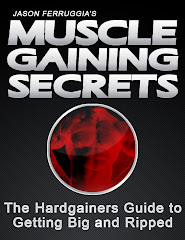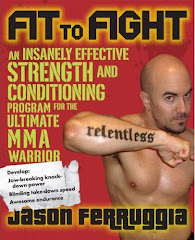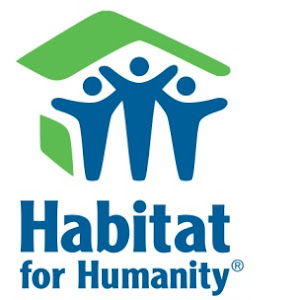Memorial Day weekend and the unofficial start of summer is only 16 weeks away which makes it the perfect time to get serious about your training and diet. For those of you who need to lose a significant amount of bodyfat in that time frame, I suggest you pay attention to what fat loss expert, Alwyn Cosgrove has to say...
JF: First of Alwyn, thanks for taking the time to sit down with us today. I want to talk to you about fat loss and hear some of your thoughts on this much debated subject. First of all what are some of the biggest misconceptions out there about dieting and training for fat loss? What do most people do wrong?
AC: There are two main mistakes Jay – and it might seem like a contradiction but it’s really true. The first is making too many changes to your program and diet – in other words, you stop doing the most effective exercises and rep ranges, and cut your calories or carbs way too much. Everything that works to build muscle – activate as much muscle mass as possible, multiple muscle groups with good form and decent weight – will also burn a shitload of calories and create “metabolic disturbance” – this is perfect for fat loss phases.The other main problem I see is people not changing anything BUT diet. The recent trend” has been “Training doesn't change at all - just your diet.”Really?How does the diet change?"Set protein at 1g per lb and fat at 30%. The rest comes from carbs"Hmmm. So your fat loss program and your sports conditioning programand your hypertrophy program are the same exercises, same protein,same fats, the only difference is the amount of carbs? Then you probably don't have too many before and after pics to support yoursystem do you, you training genius ?
JF: Hahaha, great point. What are some of the biggest time wasters when it comes to training and dieting for fat loss?
AC: The biggest ones are very low calorie diets (they just slow metabolism down too much) and low intensity steady state aerobics. You need to keep the “furnace” (your metabolism) cranking. The goal as I call it is “metabolic disturbance” – burn as many calories through training as possible but use a system that will elevate metabolism through EPOC significantly for several hours. Low intensity cardio (even on an empty stomach) just doesn’t fit in there.
JF: How does the weight training which you prescribe for a fat loss client differ from that of some one who is trying to get bigger or stronger? Or does it remain the same and you just change the diet and add in more cardio?
AC: It depends on the client and the amount of fat to lose really. With the beginner/ intermediate client I have NEVER seen these massive amounts of muscle loss that everyone is afraid of on fat loss programs. With these groups I use upper-lower supersets with slightly higher rep brackets.
With more advanced clients muscle loss can be a problem – but it is easily offset by doing 1-2 heavy sets of 4-6 reps as your first couple of exercises and then moving into a similar program as described above.
JF: I like that idea.
AC: I’ve been experimenting recently with an undulating periodization approach for more advanced fat loss clients and it has been extremely effective. It’s going to be the focus of Afterburn II when I get my finger out!
JF: What are your favorite methods of cardio/energy system work for losing fat?
AC: Interval training is obviously the way to go, but I like to use non-traditional methods of doing so – i.e. bodyweight circuits, sled dragging, barbell complexes etc. Again it’s all about creating that metabolic disturbance that I was talking about. Walking on the treadmill has its place – but it’s not in one of my fat loss programs.
JF: Is there a difference in the way you train females for fat loss versus the way you train males for fat loss?
AC: Not really although I tend to see more pure beginner females than I do males. So that alters the programs somewhat.
JF: What kind of diets do you prefer for fat loss and how do you determine what to prescribe to a given client?
AC: I like to use a low-JUNK diet for fat loss. It ends up being low carb, as most of the crap people eat come from refined carbs, but in reality I never restrict fruits and vegetables, or good carbs. A lot of stuff gets written about how many grams per pound etc, and how many calories pre and post workout…..and to be honest – most of the people writing this stuff are clearly not working with anyone real. An average fat loss client arrives at my gym typically eating 2 meals a day and about 30g of protein (and no breakfast). So am I supposed to cut their calories? And add training to it? No way.
I just recommend that these people eat 4-5 meals per day from a list of “approved” foods (ie proteins, vegetables, oatmeal etc) and try to hit a higher protein intake. The diet then builds itself without having to focus on numbers. Calorie control is important, but it’s rarely an issue with beginners in my experience.
JF: Your Afterburn training system is one of the best fat loss systems I have seen. What kind of results can people expect to obtain by following the programs you have in there?
AC: Coming from you that means a lot – as you’ve probably seen everything that’s out there. Afterburn is a 16-week periodized program that includes 3-4 weight training sessions each week, with 3-4 interval training sessions and a diet program. A 16 week commitment to fat loss is no joke though. I’d expect someone following the program closely to lose between 16-32lbs of fat on the program EASILY.
JF: Sounds great. Thanks so much for the awesome info Alwyn. We look forward to hearing more from you soon.
AC: Thanks Jay.
To start getting shredded for summer, pick up a copy of Afterburn right now.
Muscle Gaining Secrets

"Discover How to Gain 27 Pounds of Rock-Hard Muscle in 12 Weeks... Without Long Workouts, Dangerous Steroids or High Priced Supplements." Visit www.MuscleGainingSecrets.com for more info.
Fit to Fight

"Discover The Little Known, Rarely Used Training Secrets Of An Elite Combat Conditioning Coach." Order your copy at www.Relentless-Athletics.com.
About Me

- Jason Ferruggia
- A world renowned fitness and performance enhancement specialist, Jason has helped thousands of athletes, hardgainers and weekend warriors achieve their goals in record time. He is the head training adviser for Men's Fitness magazine as well as a regular contributor to several other magazines including Men's Health, Maximum Fitness, Muscle & Fitness Hers, Shape, Today's Man & MMA SportsMag.
Support Cancer Research

Please Visit www.LiftStrong.com
Stop The Genocide in Darfur

Go to www.SaveDarfur.org to learn how you can help.
Make A Difference

Visit www.Habitat.org to find out how you can get involved in a great cause.
Links
Subscribe To This Blog
Blog Archive
-
▼
2007
(129)
-
▼
January
(16)
- Fat Loss Interview with Alwyn Cosgrove
- How to Get More Calories In
- New Kid on the Block
- So What's the Deal With Tempo?
- Why You May Need To Eat More Protein
- Assuaging Your Low Volume Fears
- News Stand News
- New Survey
- More On The Secret
- The Things People Do
- MLK Day 48 Hour Sale
- Hopes & Wishes
- "I Can't Live Without My Radio"
- "I Hate Losing, Even At Checkers."
- Eat Big, Get Big
- Reader Mail
-
▼
January
(16)
Quote of the Week
"A man can be as great as he wants to be. If you believe in yourself and have the courage, the determination, the dedication, the competitive drive and if you are willing to sacrifice the little things in life and pay the price for the things that are worthwhile, it can be done."
Vince Lombardi
Vince Lombardi

